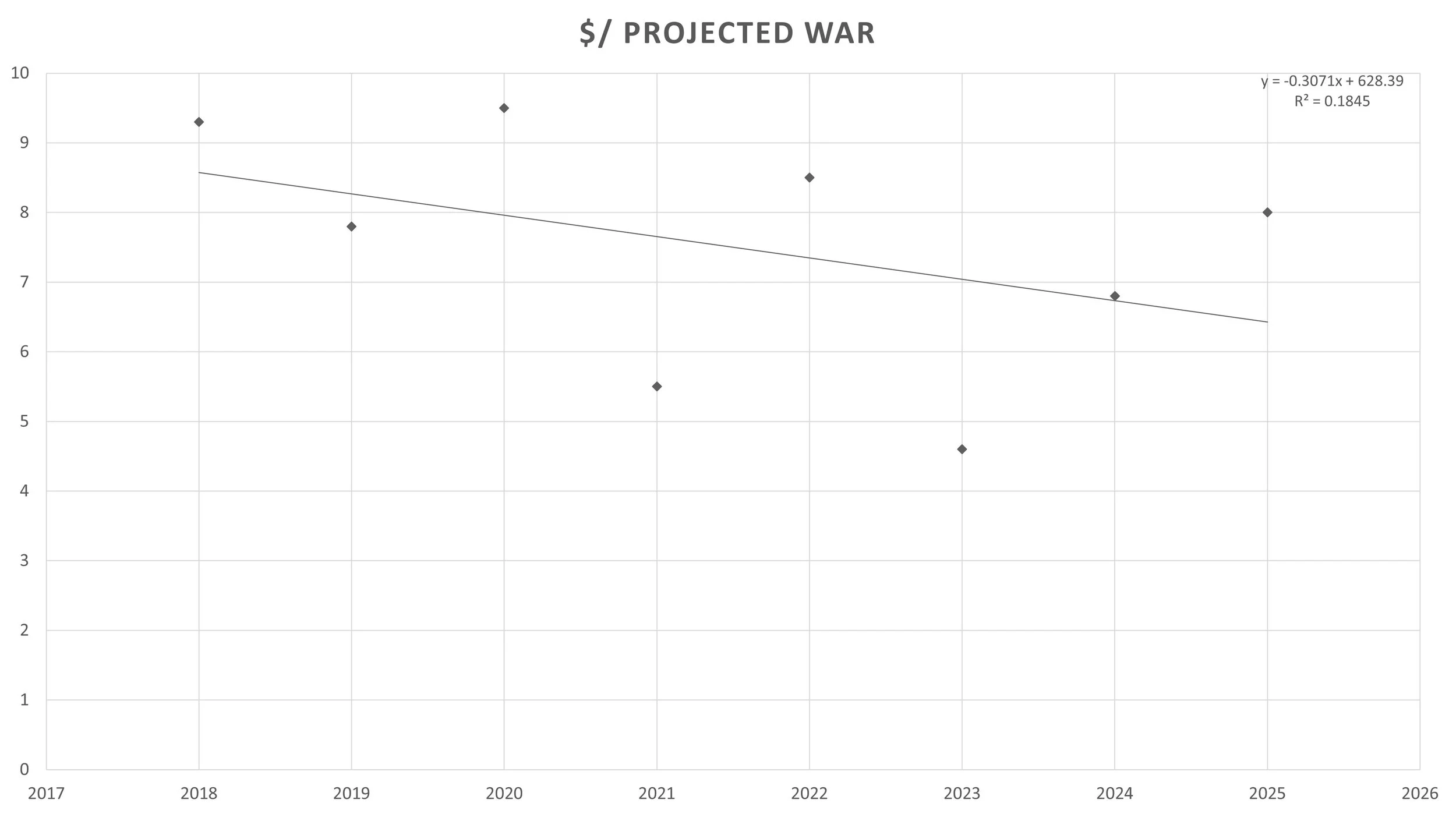Dollar/WAR in the 2024/2025 MLB Free Agency Market
Photo Credit: Marca
Last offseason, I examined the trend in dollar/WAR (wins above replacement) for free agent signings since 2018. In this analysis, I’ll revisit the dollar/WAR figures for this year’s free agency market and dive deeper into the evolving spending patterns.
Figure 1 illustrates the results of this off-season so far.
Figure 1: Dollar per WAR for 2024/2025 free agents. Dollars are in Millions of USD per season. CBT AAV is used for contracts with deferred payments. Fangraphs 2025 WAR projection is used as the WAR approximation and the data is shown for players projected at least 2 WAR in 2025.
This free agency, teams are spending $8M per WAR on average. Oakland A’s righty Luis Severino and New York Mets lefty Sean Manaea represent the biggest overpays at $11.2M/WAR and $11M/WAR, respectively. Five of the six players who signed above the $8M average are starting pitchers, so it seems that teams are now willing to pay more for what has become a scarcity in today’s game.
Among the high WAR free agents, Tigers second baseman Gleyber Torres and Astros first baseman Christian Walker have been the best value signings this offseason at just $5.4M/WAR and $6.5M/WAR, respectively.
As we await contract signings for Jurickson Profar, Alex Bregman, Corbin Burnes, Anthony Santander, Jack Flaherty, Ha-Seong Kim, and Pete Alonso, let's take a look at the $/WAR trend, incorporating the signings made so far this offseason:
Figure 2: Dollar per WAR trend for free agents
This off-season has somewhat flattened out the recent downward dollar per war trend, but it remains downward sloping, with free agents projected 2+ WAR signing for about $0.3M less per projected WAR each year. If roster construction strategy were to maintain consistent, one would expect an upward sloping, inflationary trend. The absence of this and persistence of a downward sloping trend continues to suggest that teams are prioritizing cost effective high WAR free agents, locking in players earlier via extensions, and investing relatively more in relievers and platoon players.


